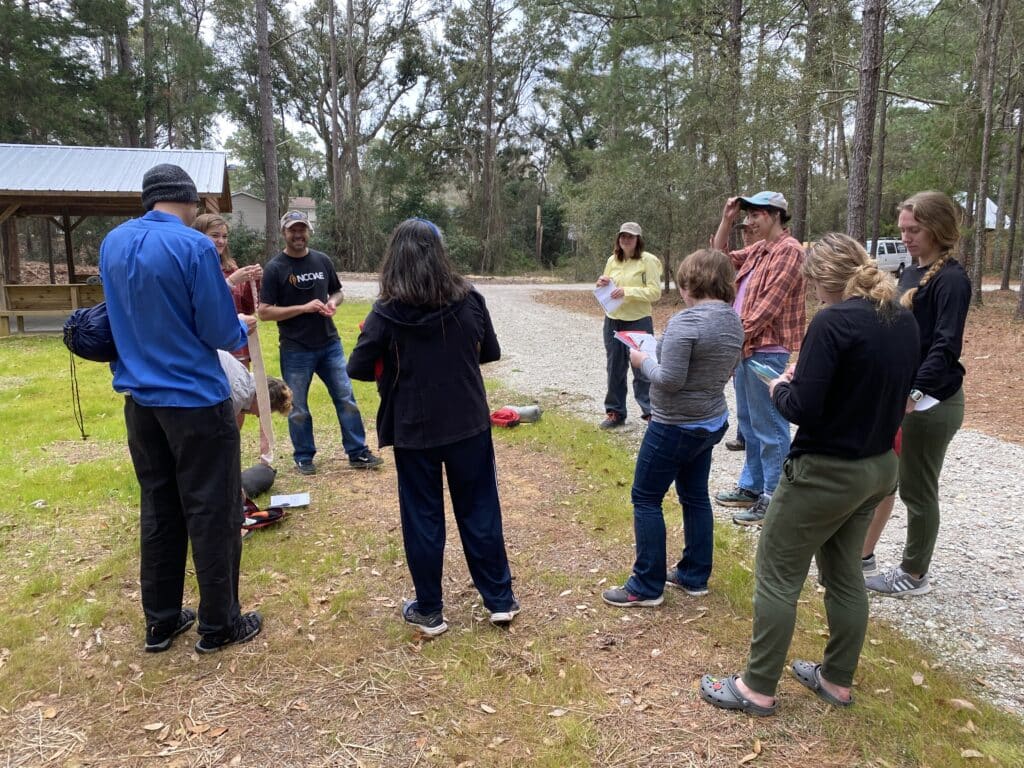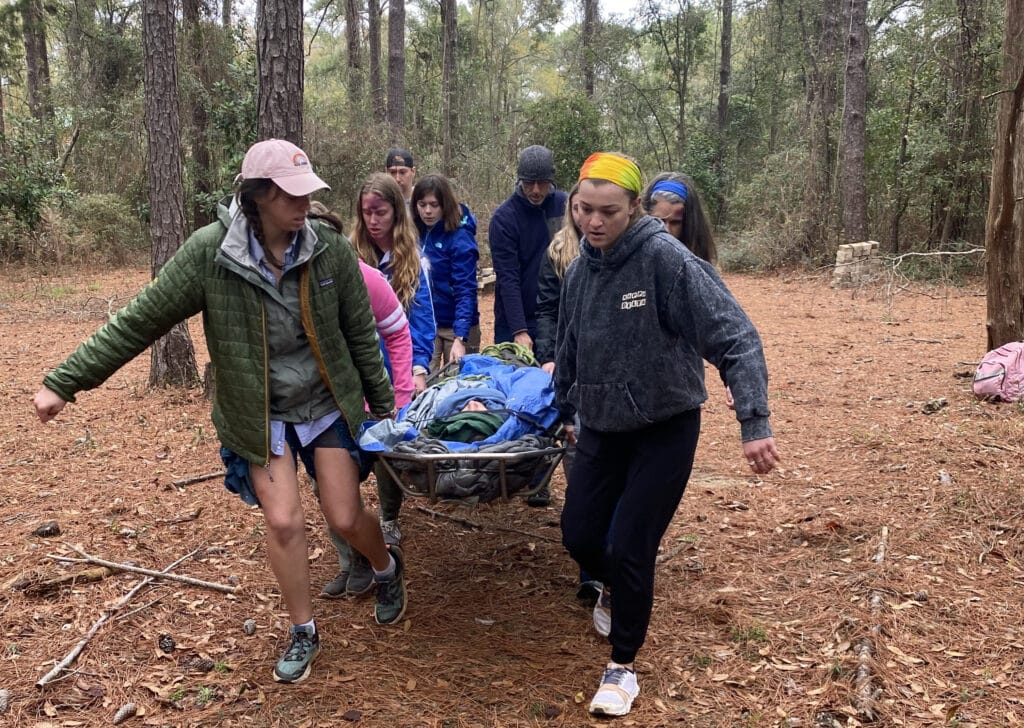When the average person encounters the term “wilderness medicine,” they typically assume it is referring to the practice of medicine in a remote or harsh environment with little to no access to medical equipment or supplies.
They may imagine a scenario of providing CPR to someone who suffered cardiac arrest during a whitewater rafting adventure or creating a splint out of a branch and a few strands of twine to help a hiker with a sprained ankle become ambulatory.
While these notions of wilderness medicine aren’t far off the mark, they are limited. In other words, close but no cigar. It’s all the above and more, which makes it a challenge to come up with a clear and comprehensive definition.
Teaching Wilderness Medicine at NCOAE
Here at The National Center for Outdoor Adventure and Education (NCOAE), our wilderness medicine courses begin with a discussion of what wilderness medicine is, as well as what each student hopes to learn from the course. Often, these discussions elicit points of discussion that require an even broader definition of the term.

While there’s no universally agreed upon definition of wilderness medicine, certain components set it apart from non-wilderness medicine. For the purpose of this blog post, let’s begin with the following definition:
Wilderness Medicine is provision of medical care when environmental conditions play a stronger role in decision making and interventions than the established systems of care.
Wilderness Medicine encompasses not only the treatment of injuries and illnesses in these settings but also includes preventive measures, survival skills, and the management of environmental hazards such as extreme weather, hazardous terrain, and wildlife encounters.
Wilderness medicine skills and techniques can be applied in a variety of setting, including but not limited to:
- Human-powered recreational activities (such as mountaineering, backpacking, rock climbing, and paddling): For example, treating a wound after being impaled by a tree branch while mountaineering, or caring for a group of teenagers whose feet are blistered after a long hike.
- Disaster medicine: For example, setting up a remote clinic in an area devastated by an earthquake, or establishing an observation schedule for a bite victim during the zombie apocalypse.
- Military medicine: For example, apply a tourniquet to prevent a soldier from bleeding out from a gunshot wound, or providing veterinary care for a village in need.
- Alternative medicine: For example, using tree bark to treat wounds, or choosing treatment options that are sensitive to cultural differences.
Take a minute or two to ponder the specific provision of wilderness medicine that may be practiced in each of the situations and settings depicted in the following picture.

‘Wilderness Medicine’ in Resource-Limited Settings
Unlike what most people assume, wilderness medicine is not limited to remote backcountry environments. It can be the only option or the best option in urban settings. For example, within a medical facility where a power outage can prompt medical staffers to use a plastic bag to “breathe” for a patient until the ventilators are back up and running. In that case, wilderness medicine becomes relevant even in an established hospital. It’s also an important reminder that wilderness medicine extends beyond routine first aid, establishing a readiness to save lives.
The scope of wilderness medicine is a critical component to empower people to fully explore and enjoy environments outside their comfort and safety zones. That training is made possible through experienced guides and instructors found within the traditional fields of outdoor education adventure programming.
These backcountry experts go to great lengths to share their knowledge and provide unique experiences to those who want to better themselves in areas outside the established “normal” systems of society. These activities carry an inherent level of risk of illness and injury beyond what is normally considered safe. The responsibility of protecting and preserving everyone’s health and safety rests on the shoulders of these guides and instructors and falls within the purview of wilderness medicine.
Brushing Up Your Wilderness Medicine Expertise
Perhaps you’re an outdoor educator, a field guide, an emergency medical technician (EMT), or a medical professional. Maybe you’re just someone who enjoys spending time outdoors with friends and family members. Or you feel a responsibility to your community to be able to provide life-saving care in the event of an accident or emergency. If so, maybe take some time to consider the confidence you have in your current level of wilderness medical care knowledge, experience, and expertise.
You might currently enjoy the luxury of a strong system of medical response and care where you live. But those conditions have historically been known to change — sometimes overnight. Ask yourself whether you have the knowledge and skills you need were that to happen.
If you’re not fully comfortable and confident in your knowledge and skills, I encourage you to learn more about NCOAE Wilderness Medicine Programs.
– – – – – – –
About the Author: Todd Mullenix is the Director of Wilderness Medicine Education at The National Center for Outdoor & Adventure Education in Wilmington, North Carolina.
TALK TO US
Have any further questions about our courses, what you’ll learn, or what else to expect? Contact us, we’re here to help!
Leave a comment